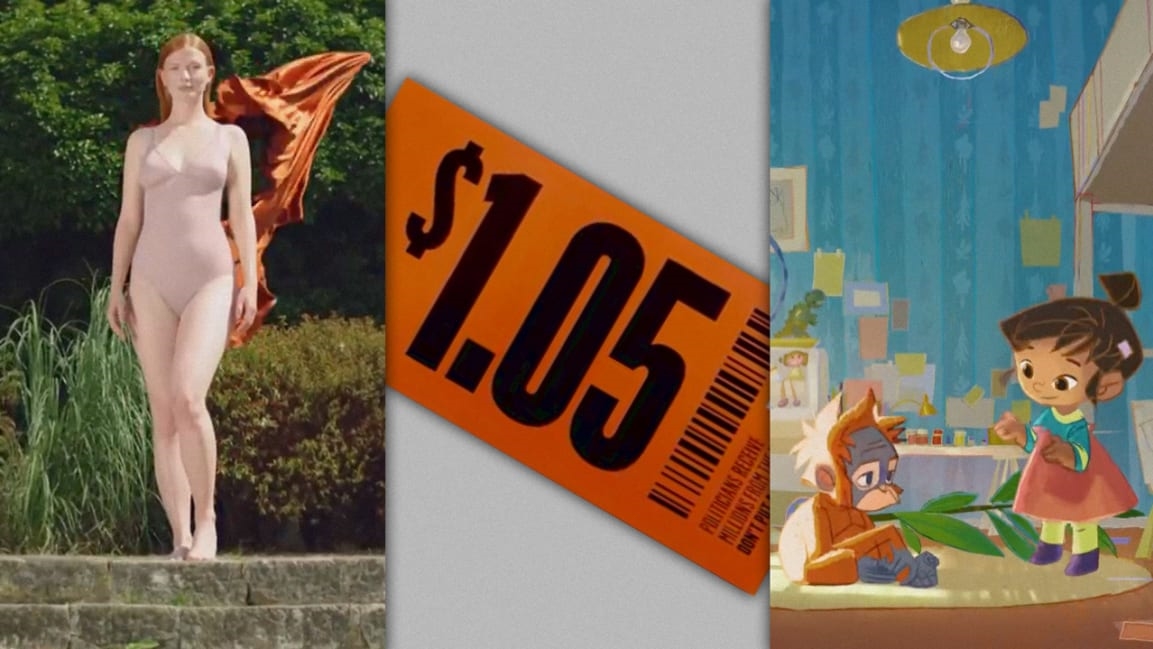These 3 spots are 2019’s best ads for good
The music video opens with a naked woman holding a singing conch shell in front of her vagina. Then other objects show up and start crooning too. There are oysters, coin purses in varying shapes and colors, plenty of exotic fruits. Despite differences, this vagina-evoking chorus belts out a familiar anthem: “We’ve come a long long way together/ Through the hard times and the good/ I have to celebrate you baby/ I have to praise you like I should.”
That’s the same verse sampled and popularized as a dance tune in the late-’90s by Fat Boy Slim, but in this case it’s done in the more melodic format of the original recording, the 1975 release “Take Yo’ Praise” by folk singer Camille Yarbrough. Her refrain continues: “You’re so rare/ You’re so fine/ I’m so glad you’re mine.”
The tribute to female genitalia is called “Viva La Vulva” and doubles as an advertisement for Libresse, which makes tampons and pads. It was developed by BBDO United Kingdom and just won top honors in the Creativity for Good category of the D&AD Professional Awards, a competition celebrating the year’s best product designs and commercial advertising. It also earned an overall award for universal excellence among all contestants.
The basic goal of creativity for good concepts is that they should sell social change and value as much as any product. As D&AD CEO Tim Lindsay puts it, “Did you leave the world a better place with your product, project, or campaign?”
He says “Viva La Vulva” obviously does that because “it’s just funny, nice, and warm, and it sort of shines a light on a taboo subject in a very brilliant way.” In fact, all three of D&AD’s creativity-minded winners share a similar upbeat tone. “People are starting to lighten up about purpose a bit,” he says. “And what we’ve seen is some humor and a lighter touch emerging.”
The second standout is “Rang-tan,” an animated cartoon for Greenpeace developed by Mother London in the United Kingdom. It’s styled as a nursery rhyme as told by a little girl who has an orangutan move into her bedroom. She wants the animal to leave because it’s making a mess, throwing away her chocolate, and howling. But when she asks the orangutan directly about why it’s there, she finds out that the animal was kicked out of its home–the rainforest–in order to make way for palm oil harvesting operations. (Palm oil is used in many common household products; the ad claims 25 orangutans die each day from related deforestation.)
After the ad went viral online, a U.K. grocery chain called Iceland secured the rights to air it on television to help highlight their commitment to stocking goods without palm oil. “It got banned because it was the political,” Lindsay says. “And that, of course, generated huge publicity.”
The other highly lauded piece is “Price on Our Lives” for March for Our Lives by McCann New York. In late 2018, it won another D&AD award in a separate competition. As Fast Company reported, the idea revolved around creating a series of large orange price tags that represented the total dollars that the NRA donated to politicians in Florida divided by the number of students in the state. Turns out, the NRA paid about $1.05 per kid’s life to rebuff gun reform.
This effort also featured an online calculator that allowed people in other states to figure out the value that student lives were being sold for in order to keep guns less regulated in areas where they live. “There was a feeling that it had actually had some tangible effect in this argument around guns,” he says.
For Lindsay, these sorts of offerings highlight how traditional sales tactics can be harnessed in more positive ways. “I think that there’s strong and growing feeling in the advertising business and to a lesser extent design that we are at the very least complicit in encouraging overconsumption for obvious reasons,” he adds. “And because of that we need to be part of the solution. The skills we have are important in driving behavioral change.”
Fast Company , Read Full Story
(10)



